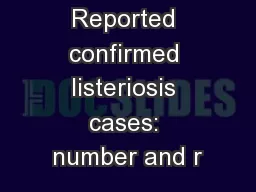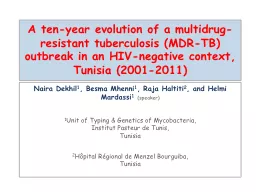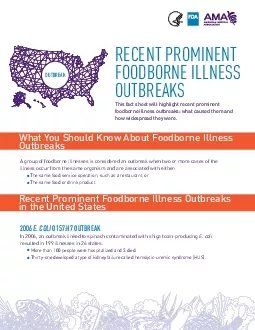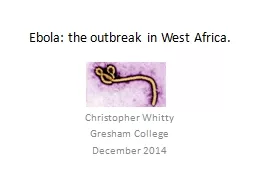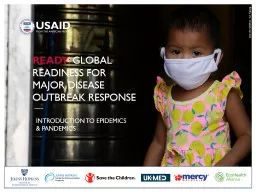PPT-Listeriosis Outbreak in Cantaloupes
Author : celsa-spraggs | Published Date : 2015-11-03
2011 Food Factor Robotics PEGBOTS FLL Team 7056 The 2011 Listeriosis Outbreak The outbreak of Listeriosis in 2011 was one of the worst food poisoning incidents
Presentation Embed Code
Download Presentation
Download Presentation The PPT/PDF document "Listeriosis Outbreak in Cantaloupes" is the property of its rightful owner. Permission is granted to download and print the materials on this website for personal, non-commercial use only, and to display it on your personal computer provided you do not modify the materials and that you retain all copyright notices contained in the materials. By downloading content from our website, you accept the terms of this agreement.
Listeriosis Outbreak in Cantaloupes: Transcript
Download Rules Of Document
"Listeriosis Outbreak in Cantaloupes"The content belongs to its owner. You may download and print it for personal use, without modification, and keep all copyright notices. By downloading, you agree to these terms.
Related Documents




